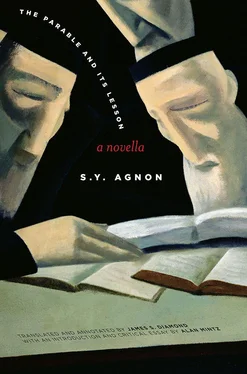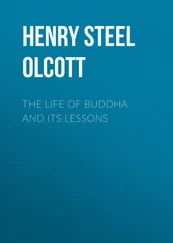1648
At the opening of the story, after stating his two purposes for telling it (to praise Rabbi Moshe and to warn of the consequences of improper speech), the narrator concludes with a perplexing statement.
To be sure, some things related here will not square with those who maintain that Buczacz was unaffected by the Khmelnitski pogroms. I leave it to the One who reconciles all matters to settle this one too.
The narrator seems to be engaged in a polemical exchange with unnamed parties who argue that Buczacz was spared in the massacres. Refuting this position is presented as one of the tasks that will be accomplished by the telling of the story, even though it is subsidiary to the narrative’s main goals. Invoking God as the arbiter who will finally decide the matter is an equivocal statement. Does it mean that the issue remains vexed despite the story’s having been laid out by the narrator? Or does it express confidence in the ultimate — but not public or immediate — vindication of his conviction concerning the town’s fortunes during the massacres?
The narrator’s antagonist would appear to be none other than the historical record itself. According to most accounts — both contemporary seventeenth-century chronicles and modern historiography — the Jews of Buczacz defended themselves in 1648 and prevented extensive damage to the town, which, because it remained relatively intact, became a refuge for survivors from other destroyed communities. 17Although the town later suffered damage when it was occupied by Ottoman Turks, in the vast and horrendous spasm of anti-Jewish violence known in Jewish parlance as gezeirot taḥ vetat 18Buczacz was spared. So what then is the proof for the narrator’s revisionist assertion to the contrary, an assertion that remains tantalizingly unexplained and requires recondite divine sanction? The proof lies in the anecdotes, incidents and major plot developments that demonstrate the effects of the pogroms at almost every level and at almost every turn in the story. The puzzle is why the narrator chooses not to gather together these abundant instances and adduce them as evidence for an explicit refutation of the assertion that Buczacz eluded the effects of 1648.
There are two related reasons for this disinclination. The story focuses on the spiritual rather than the material or physical damage caused by the massacres. Admittedly, the town was spared overt death and destruction, but the theological crisis provoked by the broad sweep of events, though less stark and exposed, is more profoundly troubling. At the heart of the crisis lies the problem of theodicy: How could the God of Israel have abandoned His beloved people to the bloodthirsty depredations of the gentiles? Within the pious certainties of the shamash, there is ostensibly no crisis: “Because of His love for us, God encumbers us with suffering in order to purge us of the qelipot we have acquired in the lands of the Gentiles and thereby prepare us for the day of His Redemption” (9–10). Yet a multiplicity of evidence, with the case of Aaron’s apostasy figuring first and foremost, plays havoc with the neatness of the shamash’s explanation. The shamash’s own wide-ranging and digressive account of events works to undermine the certainty of his theology. Despite itself, his narrative records how the catastrophe insinuated itself into every aspect of Buczacz life and created a vast reservoir of belated trauma. “Suffering is hard,” states the shamash, “hard when it happens and hard afterward” (8). He is referring specifically to Aaron’s fate, but his comment on the aftermath of catastrophe radiates throughout the story.
The second reason for the narrator’s reticence lies precisely in the anxiety it arouses concerning the gap between the official theology and the suffering that came in the wake of the pogroms, a suffering that has changed shape but hardly diminished. On the one hand, the suffering is there, persisting and ramifying, and no account of life in Buczacz of that time can ignore it. On the other, to name it, to call attention to it as such, would mean to approach closer to the fraught and menacing theological boundary that Aaron has calamitously crossed over. This anxiety is palpable in the shamash’s reconstruction of events that took place fifty-four years ago. But does it resonate for the listeners to his tale some two generations later? It is crucial to keep this retrospective time difference in mind. The Buczacz we are introduced to at the opening of the story is a place where a great deal has faded from memory. The community grew and prospered in the second half of the seventeenth century. An accord was reached with the Potocki family, the Polish magnates who owned the town, which granted the Jews residential and occupational equality with Christian residents. 19There is in evidence more wealth and security and learning. This means not only that the tractates of the Talmud and its commentaries are more commonly available but also that the indiscretion of the scholarly son-in-law of a rich man can be overlooked precisely because he is a scholar and the son-in-law of a rich man.
In the intervening half century, in sum, two things have declined: the effects of the trauma of 1648 and a basic, class-blind piety in which competing with God’s word is unthinkable. Which of the two is the true subject of Hamashal vehanimshal and the real engine of the shamash tale? It is a question worth asking because both the shamash and the narrator are indefatigable in insisting that the purpose of the story is to underscore the mortal consequences of inappropriate speech. After his lengthy and sensational account of Aaron’s apostasy, for example, the shamash is at pains to persuade us that his story is being told only en passant as an introduction to the “main thing”: “That is the story of Aaron, husband of Zlateh, and it is through his fate that I came to see how severe is the punishment for all who talk during the service and the Torah reading. If this introduction is longer than the story, more severe still is the story itself” (27). The shamash is anxious here and elsewhere to avoid the perception of a symmetry or proportionality between the two themes. And it is not just Aaron’s tale that solicits our attention; after the tour of Gehinnom, beginning in Chapter 15 the story turns toward the epic account of the twentieth of Sivan, the communal commemoration of the martyrs who perished in the massacres. Neither theme, in the final analysis, can be left behind. That being the case, we are left to ask a series of questions: Is there a fundamental link between the two themes? Or is this is a story that is burdened with accommodating two separate ideas? And finally, why are the narrators so insistent on foregrounding one over the other? These are questions that will be returned to once the effects of 1648 have been more fully explored.
The damage done by Aaron’s apostasy extends beyond the theological questions it raises. By turning Zlateh into an agunah, Aaron’s disappearance prevents the fifteen-year-old girl from marrying for the rest of her life. This is a devastating blow to the rabbi because of his affection for her as the lone survivor of his family and his empathic sorrow over the barren life that lies before her. Indeed, he is nearly unhinged by the news. He neglects his communal duties, stops giving his regular public lessons on Maimonides and Alfasi and becomes wholly obsessed with the futile quest for a legal loophole that would release Zlateh from her bonds (10–11). The man who hews to a strict regimen of reticence now finds himself, again futilely, chatting for hours over brandy and cakes with gentile peasants in hope of extracting scraps of information about Aaron’s whereabouts. What precipitates this breakdown is not only heartbreak over his poor relative’s plight but the disappointment of a broader hope: “Our Master saw in Aaron and Zlateh his aspirations for a new generation that would serve God righteously in place of their parents murdered by the enemy” (8). The rabbi sees in the young couple the seeds of a recovery that would recoup horrendous losses and reestablish the chain of Torah learning. Aaron’s desertion therefore signals not just a private sorrow but the prospect of a sliding back into the morass of communal breakdown and disintegration. It is another example of how the trauma of 1648, rather than being contained by the passing years, extends its baleful effects like time-released capsules.
Читать дальше












![Edward Ellis - Adrift on the Pacific - A Boys [sic] Story of the Sea and its Perils](/books/753342/edward-ellis-adrift-on-the-pacific-a-boys-sic-s-thumb.webp)